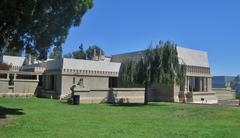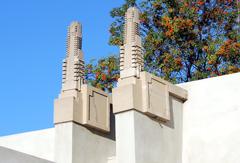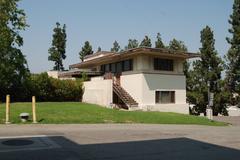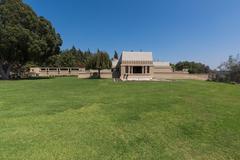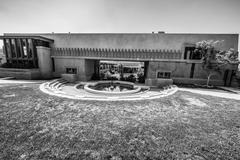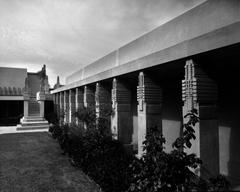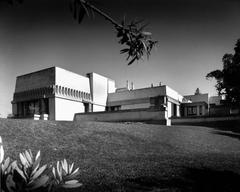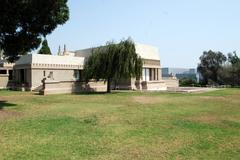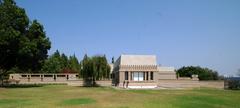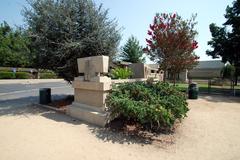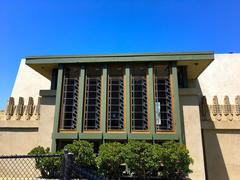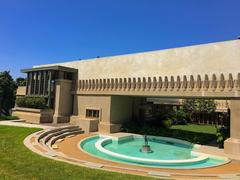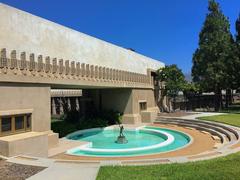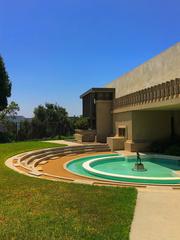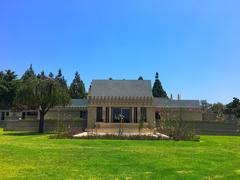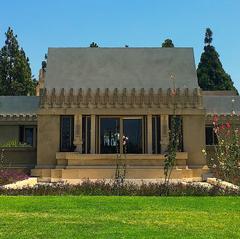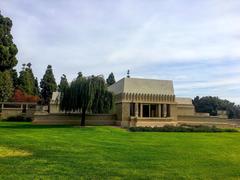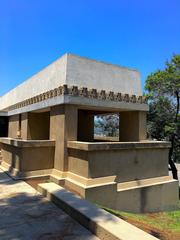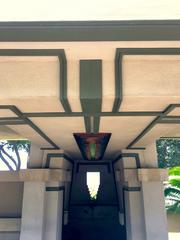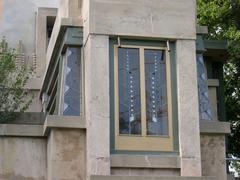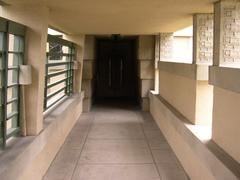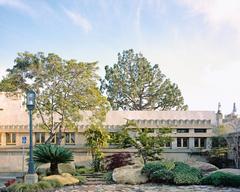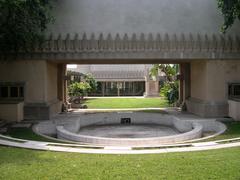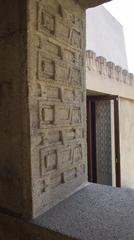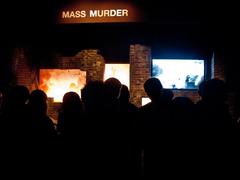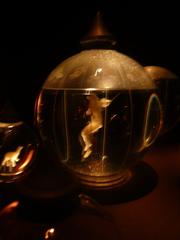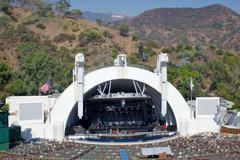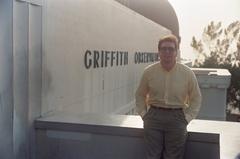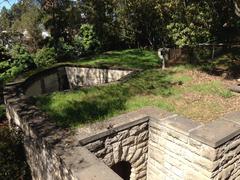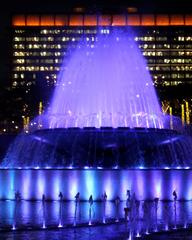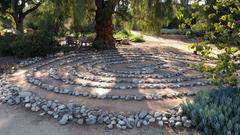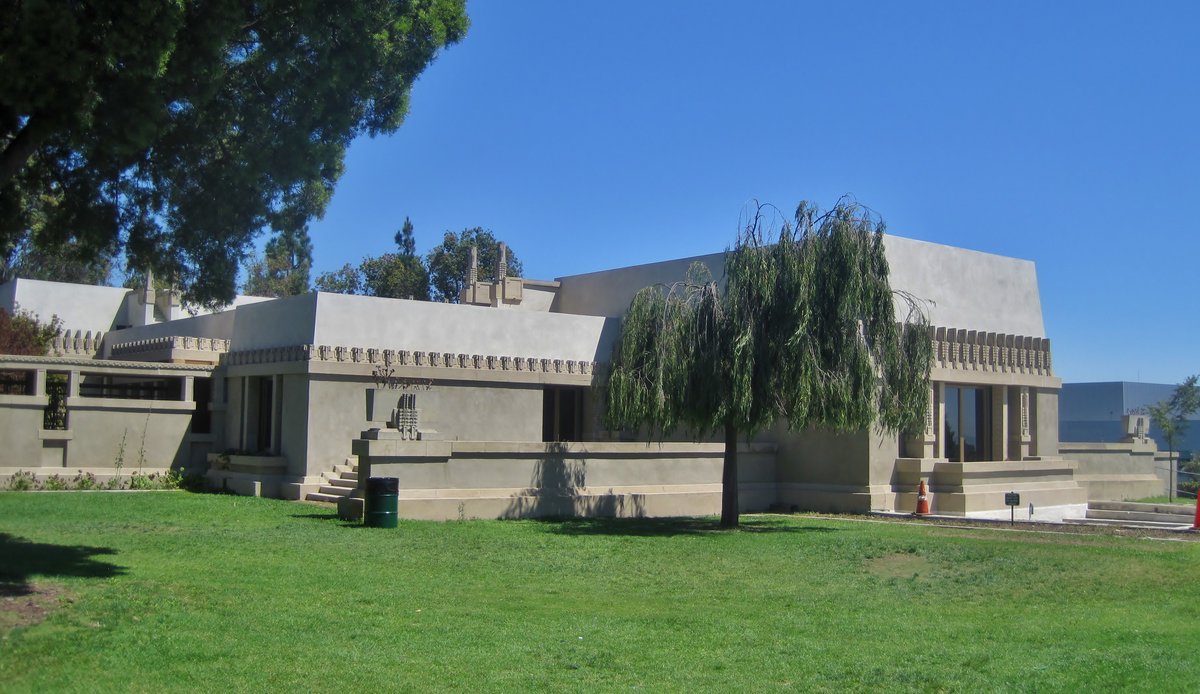
Visiting Hollyhock House in Los Angeles: A Complete Guide
Publication Date: 20/07/2024
Introduction to Hollyhock House
Hollyhock House, situated in the vibrant city of Los Angeles, California, is an architectural marvel that showcases the genius of Frank Lloyd Wright. Commissioned by oil heiress and philanthropist Aline Barnsdall in 1919, this house was intended to be the centerpiece of a cultural complex. As a result, it has become a significant landmark that merges artistic vision with architectural innovation (Los Angeles Conservancy). Completed in 1921, Hollyhock House heralds Wright’s move from his Prairie School style to more experimental forms, heavily influenced by pre-Columbian architecture, particularly the temples of Mesoamerica. This innovative approach is evident in the house’s monumental and geometric forms, the central courtyard, and extensive use of natural materials (Frank Lloyd Wright Foundation). Despite facing numerous challenges during its construction, including budget overruns and Wright’s frequent absences, Hollyhock House was completed and eventually donated to the City of Los Angeles in 1927. It now serves as the focal point of Barnsdall Art Park, a cultural hub that includes the Los Angeles Municipal Art Gallery and the Barnsdall Gallery Theatre (National Park Service).
Contents Overview
- Introduction to Hollyhock House
- History of Hollyhock House
- Origins and Commissioning
- Architectural Design and Influences
- Construction and Challenges
- Early Years and Barnsdall’s Legacy
- Restoration and Preservation Efforts
- UNESCO World Heritage Site Designation
- Cultural and Historical Significance
- Visitor Information
- Visiting Hours and Ticket Prices
- Travel Tips and Nearby Attractions
- Accessibility
- Special Events and Guided Tours
- FAQ
- Conclusion
History of Hollyhock House
Origins and Commissioning
Hollyhock House, located in Los Angeles, California, is an architectural gem designed by the renowned architect Frank Lloyd Wright. The house was commissioned by Aline Barnsdall, an oil heiress and philanthropist, in 1919. Barnsdall envisioned a cultural complex that would include a theater, artists’ residences, and other facilities. Wright was chosen for his innovative and modern design approach, which aligned with Barnsdall’s vision of creating a unique and artistic environment (Los Angeles Conservancy).
Architectural Design and Influences
Frank Lloyd Wright’s design for Hollyhock House is a prime example of his early 20th-century work, showcasing his transition from the Prairie School style to a more experimental approach. The house is named after Barnsdall’s favorite flower, the hollyhock, which is incorporated into various design elements, including the decorative motifs on the exterior and interior of the house. Wright’s design for Hollyhock House is heavily influenced by pre-Columbian architecture, particularly the ancient temples of Mesoamerica. This influence is evident in the house’s monumental and geometric forms, as well as its integration with the surrounding landscape. The house features a central courtyard, open living spaces, and extensive use of natural materials, all hallmarks of Wright’s organic architectural philosophy (Frank Lloyd Wright Foundation).
Construction and Challenges
The construction of Hollyhock House began in 1919 and was completed in 1921. The project faced numerous challenges, including budget overruns, design changes, and conflicts between Wright and Barnsdall. Wright’s frequent absences due to other projects and personal issues also contributed to the delays and complications. Despite these challenges, the house was completed and became the centerpiece of Barnsdall’s planned cultural complex, although many of the other proposed buildings were never constructed. The final cost of the house was approximately $300,000, a significant sum at the time (National Park Service).
Early Years and Barnsdall’s Legacy
After its completion, Hollyhock House served as Barnsdall’s residence for a brief period. However, due to ongoing maintenance issues and her dissatisfaction with certain aspects of the house, Barnsdall decided to donate the property to the City of Los Angeles in 1927. Her donation included the house and eleven acres of surrounding land, with the stipulation that the site be used for artistic and cultural purposes. Barnsdall’s vision for a cultural center was realized with the establishment of Barnsdall Art Park, which now includes the Los Angeles Municipal Art Gallery, the Barnsdall Gallery Theatre, and the Junior Arts Center. Hollyhock House remains the focal point of the park and continues to attract visitors from around the world (Barnsdall Art Park).
Restoration and Preservation Efforts
Over the years, Hollyhock House has undergone several restoration and preservation efforts to maintain its structural integrity and historical authenticity. The first major restoration took place in the 1970s, led by the architectural firm of Lloyd Wright, Frank Lloyd Wright’s son. This restoration focused on repairing damage caused by earthquakes and water infiltration, as well as restoring original design elements that had been altered or removed. In 2010, a comprehensive restoration project was initiated, funded by the City of Los Angeles and various grants. This project aimed to restore the house to its original 1921 appearance, based on historical photographs and Wright’s original plans. The restoration included structural repairs, restoration of decorative elements, and the installation of modern climate control and security systems to protect the house and its contents. The restoration was completed in 2015, and Hollyhock House was reopened to the public. The project received numerous awards and accolades for its meticulous attention to detail and commitment to preserving Wright’s architectural legacy (Los Angeles Times).
UNESCO World Heritage Site Designation
In 2019, Hollyhock House was designated as a UNESCO World Heritage Site, along with seven other Frank Lloyd Wright buildings. This prestigious designation recognizes the house’s outstanding universal value as an example of Wright’s innovative architectural vision and its influence on modern architecture worldwide. The UNESCO designation has brought increased attention and recognition to Hollyhock House, further solidifying its status as a cultural and architectural landmark. The designation also underscores the importance of ongoing preservation efforts to ensure that future generations can continue to experience and appreciate this iconic work of architecture (UNESCO).
Cultural and Historical Significance
Hollyhock House holds a unique place in the history of American architecture and culture. It represents a pivotal moment in Frank Lloyd Wright’s career, showcasing his experimentation with new forms and materials. The house also reflects Aline Barnsdall’s vision of creating a space that fosters artistic and cultural expression. As a public museum and cultural site, Hollyhock House continues to inspire and educate visitors about the importance of architectural innovation and preservation. Its inclusion in Barnsdall Art Park ensures that it remains a vibrant part of Los Angeles’ cultural landscape, offering a space for artistic exploration and community engagement (City of Los Angeles Department of Cultural Affairs).
Visitor Information
Visiting Hours and Ticket Prices
Hollyhock House is open to the public from Thursday to Sunday, 11:00 AM to 4:00 PM. Tickets can be purchased online or at the site. General admission is $7, and discounts are available for seniors, students, and children. Group tours can also be arranged in advance.
Travel Tips and Nearby Attractions
Located in Barnsdall Art Park, Hollyhock House is easily accessible by car or public transportation. Free parking is available on-site. While visiting, explore other attractions within the park, such as the Los Angeles Municipal Art Gallery and Barnsdall Gallery Theatre. Nearby, you can also visit Griffith Park, the Los Angeles County Museum of Art (LACMA), and the Hollywood Walk of Fame.
Accessibility
Hollyhock House is committed to providing access to all visitors. The site includes ramps and other facilities to accommodate guests with mobility issues. For specific accessibility inquiries, contact the venue directly.
Special Events and Guided Tours
Hollyhock House hosts various special events throughout the year, including art exhibitions, cultural festivals, and educational workshops. Guided tours are available, offering in-depth insights into the architectural and historical significance of the house. Photography enthusiasts will find numerous scenic spots to capture the beauty of this architectural gem.
FAQ
What are the visiting hours for Hollyhock House?
Hollyhock House is open from Thursday to Sunday, 11:00 AM to 4:00 PM.
How much do tickets to Hollyhock House cost?
General admission tickets are $7. Discounts are available for seniors, students, and children.
Is Hollyhock House accessible to visitors with disabilities?
The main floor is accessible, and wheelchairs are available upon request. Contact the venue for specific accessibility needs.
Can I take photos inside Hollyhock House?
Yes, but the use of flash, tripods, and selfie sticks is prohibited.
Conclusion
Hollyhock House’s significance lies in its architectural innovation, cultural and historical context, and its lasting impact on modern architecture. Its designation as a UNESCO World Heritage Site, coupled with ongoing preservation efforts and educational programs, ensures that this architectural gem continues to inspire and educate future generations. As a testament to Frank Lloyd Wright’s genius and Aline Barnsdall’s visionary spirit, Hollyhock House remains a vital part of Los Angeles’ cultural landscape.
Sources and Further Reading
- Los Angeles Conservancy. Hollyhock House. Retrieved from Los Angeles Conservancy
- Frank Lloyd Wright Foundation. Hollyhock House. Retrieved from Frank Lloyd Wright Foundation
- National Park Service. Hollyhock House. Retrieved from National Park Service
- UNESCO. Frank Lloyd Wright’s 20th-Century Architecture: Eight Buildings. Retrieved from UNESCO
- City of Los Angeles Department of Cultural Affairs. Hollyhock House. Retrieved from City of Los Angeles Department of Cultural Affairs
